
Santa Marta: The Caribbean Heartbeat of Colombia
Discover Santa Marta, Colombia's Caribbean gem, where colonial history, stunning beaches, and vibrant culture create an unforgettable travel experience.
Santa Marta, nestled between the Caribbean Sea and the Sierra Nevada mountains, is one of Colombia's oldest cities. It's a place where history, culture, and natural beauty converge to create a unique travel experience. Founded in 1525, it carries a rich colonial heritage visible in its architecture and museums. Stroll through the historic city center, where cobblestone streets lead to charming plazas and centuries-old cathedrals. Santa Marta is also a gateway to some of Colombia's most spectacular natural attractions. The nearby Tayrona National Natural Park offers pristine beaches, lush jungle, and diverse wildlife. It's a paradise for hikers and beach lovers alike. For a deeper cultural immersion, visit the indigenous villages in the Sierra Nevada de Santa Marta, where you can learn about the Kogi and Wiwa cultures. The city's vibrant waterfront is perfect for leisurely walks, offering stunning sunsets and a lively nightlife scene. Don't miss the local seafood, which is a culinary highlight. Whether you're exploring its rich history, embarking on outdoor adventures, or simply relaxing by the sea, Santa Marta promises a memorable visit.
Local tips in Santa Marta
- Visit Tayrona National Natural Park early in the morning to avoid crowds and enjoy the cooler weather.
- Wear comfortable walking shoes as the historic center's cobblestone streets can be uneven.
- Try the local seafood dishes such as 'ceviche' and 'arepas de huevo' for an authentic culinary experience.
- Keep hydrated and use sunscreen, especially when exploring outdoor attractions.
- Learn a few basic Spanish phrases; while many locals are friendly, not everyone speaks English.
Neighbourhoods in Santa Marta
Santa Marta: The Caribbean Heartbeat of Colombia
Santa Marta, nestled between the Caribbean Sea and the Sierra Nevada mountains, is one of Colombia's oldest cities. It's a place where history, culture, and natural beauty converge to create a unique travel experience. Founded in 1525, it carries a rich colonial heritage visible in its architecture and museums. Stroll through the historic city center, where cobblestone streets lead to charming plazas and centuries-old cathedrals. Santa Marta is also a gateway to some of Colombia's most spectacular natural attractions. The nearby Tayrona National Natural Park offers pristine beaches, lush jungle, and diverse wildlife. It's a paradise for hikers and beach lovers alike. For a deeper cultural immersion, visit the indigenous villages in the Sierra Nevada de Santa Marta, where you can learn about the Kogi and Wiwa cultures. The city's vibrant waterfront is perfect for leisurely walks, offering stunning sunsets and a lively nightlife scene. Don't miss the local seafood, which is a culinary highlight. Whether you're exploring its rich history, embarking on outdoor adventures, or simply relaxing by the sea, Santa Marta promises a memorable visit.
When is the best time to go to Santa Marta?
Iconic landmarks you can’t miss
Parque de los Novios
Discover the charm of Parque de los Novios, a vibrant park in Santa Marta perfect for relaxation, cultural experiences, and enjoying local flavors.
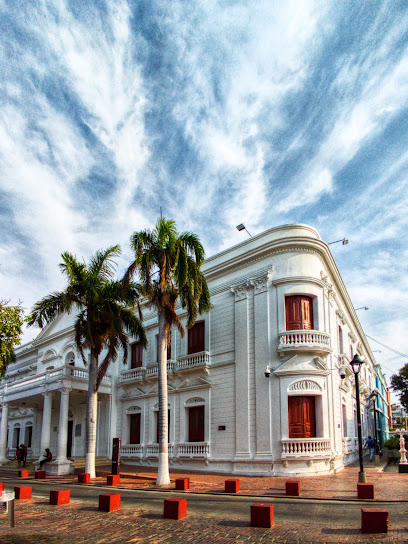
Quinta de San Pedro Alejandrino
Discover the historical charm of Quinta de San Pedro Alejandrino in Santa Marta, where art, nature, and the legacy of Simón Bolívar intertwine.

Parque Bolívar
Discover the serene beauty of Parque Bolívar in Santa Marta, a vibrant park perfect for relaxation, picnics, and cultural immersion amidst lush greenery.

Mercado Público de Santa Marta
Discover the heart of Santa Marta at Mercado Público, where local flavors and vibrant culture meet in a bustling market experience.

Playa Bello Horizonte
Experience the beauty and tranquility of Playa Bello Horizonte, a top beach destination in Santa Marta, Colombia, perfect for sunbathing and water sports.

Museo del Oro Tairona - Casa de la Aduana
Explore the exquisite craftsmanship and rich culture of the Tairona civilization at the Museo del Oro Tairona in Santa Marta.

Acuario Mundo Marino
Discover the wonders of marine life at Acuario Mundo Marino, a captivating aquarium in Santa Marta, Colombia, perfect for family-friendly adventures.

Catedral Basílica de Santa Marta
Explore the historic Catedral Basílica de Santa Marta, a stunning architectural gem reflecting the rich heritage of Santa Marta, Colombia.

Ouzo Santa Marta
Discover the vibrant Mediterranean flavors at Ouzo Santa Marta, where Colombian hospitality meets exquisite cuisine in a lively atmosphere.

Hilton Garden Inn Santa Marta
Discover the perfect blend of comfort and adventure at Hilton Garden Inn Santa Marta, your gateway to the stunning Caribbean coast and vibrant local culture.

Marina Santa Marta
Discover Marina Santa Marta: A vibrant marina offering stunning views, delightful dining, and exciting aquatic adventures along Colombia's Caribbean coast.

Restaurante Mañe Cayon
Discover the vibrant flavors of the Caribbean at Restaurante Mañe Cayon, a seafood paradise in the heart of Santa Marta.

Parque Camellón Rodrigo de Bastidas
Discover the enchanting beauty of Parque Camellón Rodrigo de Bastidas in Santa Marta, Colombia, where nature, culture, and relaxation intertwine.

Masaya Santa Marta
Experience the heart of Colombian culture at Masaya Santa Marta, your ultimate hostel destination for comfort and adventure.

Playa Taganga
Experience the natural beauty and vibrant culture of Playa Taganga, a hidden gem on Colombia's Caribbean coast, perfect for relaxation and adventure.

Unmissable attractions to see
Parque Nacional Natural Tayrona
Experience the breathtaking beauty of Parque Nacional Natural Tayrona, a stunning national park in Colombia's Magdalena region offering diverse ecosystems and rich wildlife.

Parque de los Novios
Experience the vibrant culture and lush landscapes of Parque de los Novios, a must-visit urban park in the heart of Santa Marta, Colombia.

Quinta de San Pedro Alejandrino
Explore the historical and cultural richness of Quinta de San Pedro Alejandrino in Santa Marta, a blend of art, history, and botanical beauty.

Bahía de Santa Marta
Explore Bahia de Santa Marta, a vibrant coastal paradise in Colombia known for stunning beaches, rich history, and diverse marine life.

Parque Bolívar
Explore the serene beauty and cultural vibrancy of Parque Bolívar, an essential stop for every Santa Marta traveler.

Playa Buritaca
Experience the natural beauty and cultural richness of Playa Buritaca, a stunning beach destination in Santa Marta, Colombia, perfect for relaxation and adventure.

Playa Bello Horizonte
Experience the beauty of Playa Bello Horizonte, a serene beach paradise in Santa Marta, Colombia, perfect for relaxation and adventure alike.

Playa El Rodadero santa marta
Experience the vibrant atmosphere and stunning beauty of Playa El Rodadero, the ultimate beach paradise in Santa Marta, Colombia.
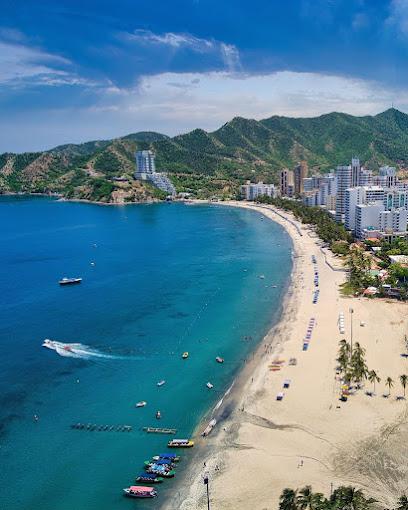
Playa Grande, Taganga
Experience the enchanting beauty of Playa Grande, a pristine beach in Santa Marta, where adventure and relaxation meet in a tropical paradise.

Catedral Basílica de Santa Marta
Experience the rich history and stunning architecture of Catedral Basílica de Santa Marta, the oldest cathedral in South America, nestled in vibrant Santa Marta.

Cerro Ziruma
Explore the breathtaking views and rich biodiversity of Cerro Ziruma, a natural treasure just outside Santa Marta, Colombia, perfect for nature lovers and adventurers.

Parque Camellón Rodrigo de Bastidas
Explore the lush beauty and cultural vibrancy of Parque Camellón Rodrigo de Bastidas, a serene retreat in the heart of Santa Marta, Colombia.

Parque del Agua
Explore Parque del Agua in Santa Marta for an unforgettable water park experience, complete with thrilling slides, relaxing pools, and fun for all ages.

Pozo Azul
Explore the breathtaking beauty of Pozo Azul, a nature preserve in Santa Marta, renowned for its stunning turquoise waters and lush landscapes.

Marinka Waterfalls
Explore Marinka Waterfalls: A Natural Oasis in Arimaca, Santa Marta for Refreshing Swims and Scenic Beauty.
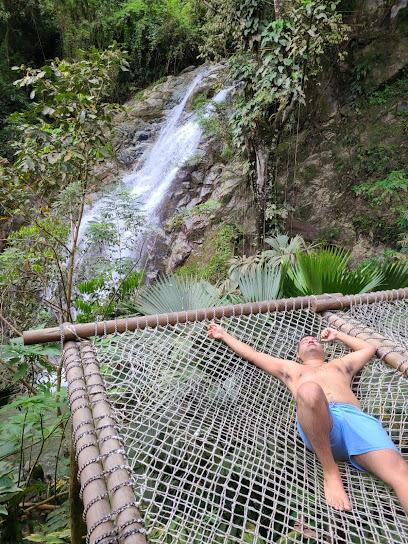
Essential places to dine
Ouzo Santa Marta
Experience vibrant Mediterranean cuisine at Ouzo Santa Marta – where fresh flavors meet warm hospitality in the heart of Colombia.

Lulo Café Bar
Experience authentic Colombian flavors at Lulo Café Bar in Santa Marta - where every meal is a celebration of taste and culture.

Restaurante Mañe Cayon
Experience the best seafood dining in Santa Marta at Restaurante Mañe Cayon - where fresh ingredients meet traditional flavors.
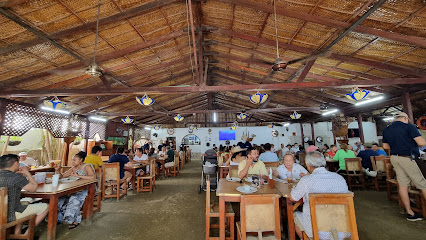
Artesanal Restobar
Experience the best artisanal pizzas in Santa Marta at Artesanal Restobar – where flavor meets vibrant ambiance.
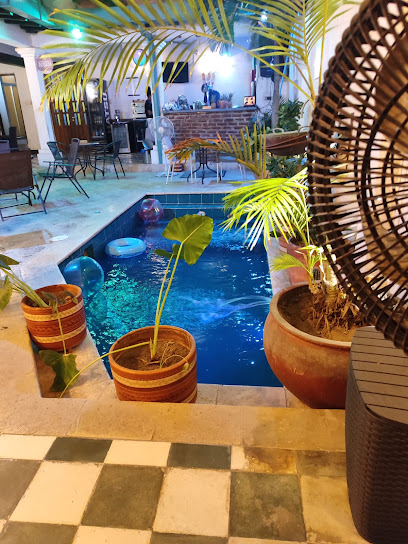
Donde Chucho Gourmet
Experience the exquisite flavors of Santa Marta at Donde Chucho Gourmet - where local cuisine meets gourmet excellence.
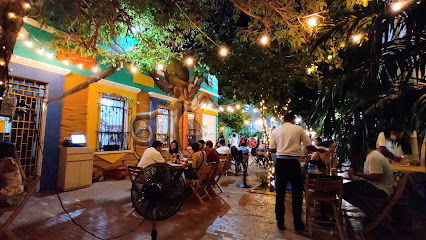
Porthos Steakhouse & Pub
Discover exceptional steaks and local delights at Porthos Steakhouse & Pub in Santa Marta – a culinary gem with vibrant ambiance.

Ikaro Cafe
Experience the rich flavors of Colombian coffee at Ikaro Cafe in Santa Marta – your cozy retreat for breakfast and baked delights.

Guasimo
Discover Guasimo in Santa Marta - where traditional Colombian cuisine meets modern culinary artistry for an unforgettable dining experience.

Pachamama Restaurante Bar
Experience vibrant flavors and ocean views at Pachamama Restaurante Bar in beautiful Taganga.

La Muzzería
Discover La Muzzería in Santa Marta – where traditional Colombian flavors meet modern culinary artistry in an inviting atmosphere.

Restaurante LamArt
Experience the rich flavors of Colombia at Restaurante LamArt, where fresh seafood meets traditional culinary artistry in Santa Marta.

Babaganoush Restaurante-Bar
Discover delicious Italian cuisine infused with local flavors at Babaganoush Restaurante-Bar in beautiful Taganga.

El Mexican Santa Marta
Experience the vibrant flavors of Mexico at El Mexican Santa Marta – where every dish tells a story.

Marrakech Restaurant and Bar
Savor authentic Lebanese flavors at Marrakech Restaurant and Bar in Santa Marta—where tradition meets modern dining in a vibrant atmosphere.
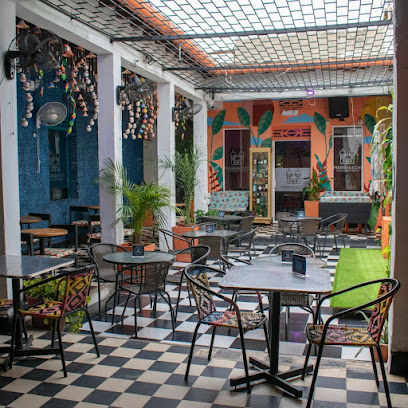
Arepas de yiya
Experience authentic Colombian cuisine at Arepas de Yiya in Santa Marta—where every dish tells a story.

Markets, malls and hidden boutiques
Centro Comercial Buenavista
Explore the vibrant Centro Comercial Buenavista in Santa Marta, featuring diverse shopping, delightful dining, and exciting entertainment for everyone.

Centro Comercial Ocean Mall
Discover a shopper’s paradise at Centro Comercial Ocean Mall, where local culture meets global brands in the heart of Santa Marta.

Mattelsa Santa Marta - Tienda de Ropa
Explore the vibrant fashion scene at Mattelsa Santa Marta, where local culture meets contemporary style in a charming shopping experience.

Casa Triada
Discover unique gifts, local art, and aromatic treasures at Casa Triada in Santa Marta, a must-visit boutique for every traveler.

Artesanías Santa Martha
Discover the essence of Colombian culture at Artesanías Santa Martha – your go-to gift shop for unique handicrafts and souvenirs.

Santa Marca Diseño y Souvenirs
Explore authentic Colombian craftsmanship at Santa Marca Diseño y Souvenirs, where every piece is a unique reflection of local culture and artistry.

Buena hora beachwear
Explore the stylish beachwear at Buena Hora Beachwear in Santa Marta, your destination for vibrant and trendy coastal fashion.

Fashion Pink Boutique
Explore Fashion Pink Boutique in Santa Marta for stylish clothing that combines local flair with modern trends, perfect for every traveler.

Variedades Natalia
Explore Variedades Natalia in Santa Marta for unique gifts, cosmetics, and toys that capture the essence of Colombian culture.

Biosierra
Discover the charm of Biosierra, a unique gift shop and coffee haven in Santa Marta, where local artistry meets aromatic brews.

Casa Quinta Artesanal
Discover the artistry of Colombia at Casa Quinta Artesanal, a unique gift shop and handicraft museum in Santa Marta, showcasing local craftsmanship.

Artesanías & Más
Discover the heart of Colombian culture at Artesanías & Más in Santa Marta, where every handcrafted piece tells a story.

AGUA SALAÁ Beachwear Vestidos de Baño - Bikini - Boutique
Explore the vibrant styles of AGUA SALAÁ Beachwear in Santa Marta, your go-to boutique for stunning swimwear and beach fashion.

Melocotón Boutique
Explore Melocotón Boutique in Santa Marta for unique fashion and artisan treasures reflecting the essence of Colombia.

Evas Boutique
Explore Evas Boutique in Santa Marta for exclusive women's fashion, local designers, and a unique shopping experience in a vibrant coastal city.

Essential bars & hidden hideouts
Lulo Café Bar
Discover the vibrant flavors and lively atmosphere of Lulo Café Bar in Santa Marta, where every meal is a culinary celebration.

La Puerta
Experience the vibrant nightlife of Santa Marta at La Puerta, a lively bar offering an extensive drink menu and a welcoming atmosphere.

Caribbean Team
Discover the vibrant taste of the Caribbean at Caribbean Team, where grilled delights meet fast food favorites in the heart of Santa Marta.

Crab's Bar
Experience the vibrant nightlife of Santa Marta at Crab's Bar, a lively destination for expertly crafted cocktails and a friendly atmosphere.

La Azotea Disco Bar Santa Marta
Experience the heart of Santa Marta's nightlife at La Azotea Disco Bar, where cocktails flow and the dance floor awaits.
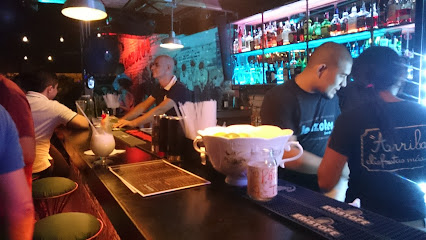
El Mono ROjo
Experience the vibrant nightlife at El Mono Rojo, a premier bar and disco club in Santa Marta, where every night is a celebration of music and dance.

Charlie's Bar
Experience the vibrant nightlife at Charlie's Bar in Santa Marta, where cocktails and camaraderie create unforgettable memories.

Viajero Santa Marta Terraza Bar
Discover the vibrant nightlife at Viajero Santa Marta Terraza Bar, where refreshing cocktails meet stunning views in Santa Marta's heart.

Marley Bar Reggae Rock 80's
Discover the vibrant energy of Marley Bar Reggae Rock 80's in Santa Marta, where live reggae music meets a lively atmosphere, perfect for nightlife enthusiasts.

Shotsy By Féstival Shots
Discover the vibrant nightlife of Santa Marta at Shotsy By Féstival Shots, where cocktails, music, and great company await you.

La Luna Rock Bar
Experience vibrant nightlife at La Luna Rock Bar in Santa Marta, where live music and delicious cocktails come together for an unforgettable evening.

Aurelia Pub ° Hosting
Experience the vibrant nightlife at Aurelia Pub in Santa Marta, where cocktails meet salsa rhythms in a historic setting.

Gairaca Lounge- Discobar
Experience the vibrant nightlife of Santa Marta at Gairaca Lounge- Discobar, where music, drinks, and fun come together in an unforgettable atmosphere.

La cocoteria
Discover the culinary delights of La Cocoteria, a vibrant gastropub in Santa Marta offering local flavors and refreshing drinks.
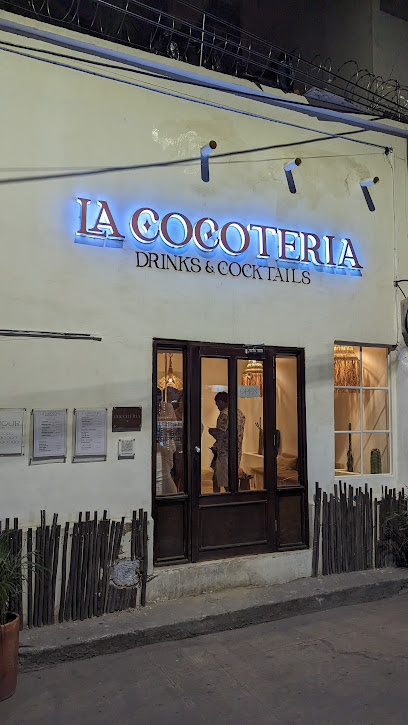
Cayetano Cocktail Bar & Social Club
Discover the vibrant nightlife of Santa Marta at Cayetano Cocktail Bar & Social Club, renowned for its innovative cocktails and lively atmosphere.

Travel experiences inspired by this city
Explore more travel diariesLocal Phrases
-
- HelloHola
[oh-lah] - GoodbyeAdiós
[ah-dee-ohs] - YesSí
[see] - NoNo
[noh] - Please/You're welcomePor favor/De nada
[por fah-vor/deh nah-dah] - Thank youGracias
[grah-see-ahs] - Excuse me/SorryPerdón/Lo siento
[pair-dohn/loh see-ehn-toh] - How are you?¿Cómo estás?
[koh-moh ehs-tahs] - Fine. And you?Bien. ¿Y tú?
[byen. ee too] - Do you speak English?¿Hablas inglés?
[ah-blahs een-glehs] - I don't understandNo entiendo
[noh ehn-tee-ehn-doh]
- HelloHola
-
- I'd like to see the menu, pleaseMe gustaría ver el menú, por favor
[meh goo-stah-ree-ah vehr ehl meh-noo, por fah-vor] - I don't eat meatNo como carne
[noh koh-moh kahr-neh] - Cheers!¡Salud!
[sah-lood] - I would like to pay, pleaseQuisiera pagar, por favor
[kee-see-eh-rah pah-gahr, por fah-vor]
- I'd like to see the menu, pleaseMe gustaría ver el menú, por favor
-
- Help!¡Ayuda!
[ah-yoo-dah] - Go away!¡Vete!
[veh-teh] - Call the Police!¡Llama a la policía!
[yah-mah ah lah poh-lee-see-ah] - Call a doctor!¡Llama a un médico!
[yah-mah ah oon meh-dee-koh] - I'm lostEstoy perdido/a
[ehs-toy pair-dee-doh/ah] - I'm illEstoy enfermo/a
[ehs-toy ehn-fehr-moh/ah]
- Help!¡Ayuda!
-
- I'd like to buy...Me gustaría comprar...
[meh goo-stah-ree-ah kohm-prahr...] - I'm just lookingSolo estoy mirando
[soh-loh ehs-toy meer-ahn-doh] - How much is it?¿Cuánto cuesta?
[kwan-toh kweh-stah] - That's too expensiveEso es muy caro
[eh-soh ehs moo-ee kah-roh] - Can you lower the price?¿Puede bajar el precio?
[pweh-deh bah-har ehl pree-see-oh]
- I'd like to buy...Me gustaría comprar...
-
- What time is it?¿Qué hora es?
[keh oh-rah ehs] - It's one o'clockEs la una
[ehs lah oo-nah] - Half past (10)Las diez y media
[lahs dee-ehs ee meh-dee-ah] - MorningMañana
[mah-nyah-nah] - AfternoonTarde
[tahr-deh] - EveningNoche
[noh-cheh] - YesterdayAyer
[ah-yehr] - TodayHoy
[oy] - TomorrowMañana
[mah-nyah-nah] - 1Uno
[oo-noh] - 2Dos
[dohs] - 3Tres
[trehs] - 4Cuatro
[kwah-troh] - 5Cinco
[seen-koh] - 6Seis
[sehs] - 7Siete
[syeh-teh] - 8Ocho
[oh-choh] - 9Nueve
[nweh-veh] - 10Diez
[dee-ehs]
- What time is it?¿Qué hora es?
-
- Where's a/the...?¿Dónde está...?
[dohn-deh ehs-tah] - What's the address?¿Cuál es la dirección?
[kwal ehs lah dee-rehk-syohn] - Can you show me (on the map)?¿Puedes mostrarme (en el mapa)?
[pweh-dehs mohs-trar-meh (ehn ehl mah-pah)] - When's the next (bus)?¿Cuándo es el próximo (autobús)?
[kwan-doh ehs ehl proh-ssee-moh (ow-toh-boos)] - A ticket (to ....)Un boleto (para ...)
[oon boh-leh-toh (pah-rah)]
- Where's a/the...?¿Dónde está...?
History of Santa Marta
-
Santa Marta, founded on July 29, 1525, by Spanish conquistador Rodrigo de Bastidas, is one of the oldest surviving cities in Colombia. As the first Spanish settlement in Colombia, it served as a crucial point of contact between the New World and Spain. Bastidas chose the site for its strategic location, natural harbor, and access to the Sierra Nevada de Santa Marta mountains.
-
Before the arrival of the Spanish, the region was inhabited by the Tayrona civilization, an indigenous group known for their advanced agricultural practices, urban settlements, and intricate goldwork. The Tayrona people thrived in the region for centuries, leaving behind a legacy of archaeological sites, such as Ciudad Perdida, also known as the Lost City.
-
During the 16th and 17th centuries, Santa Marta was a frequent target for pirate attacks due to its strategic location and wealth. Notable pirates such as Francis Drake and John Hawkins raided the city, leading to its fortification. The construction of the Santa Marta Cathedral, the oldest church in Colombia, was partially driven by the need for a stronghold against pirate invasions.
-
One of the most significant historical events in Santa Marta is the death of Simon Bolivar, the liberator of much of South America from Spanish rule. In 1830, after resigning from the presidency of Gran Colombia, Bolivar sought refuge in Santa Marta. He spent his final days at the Quinta de San Pedro Alejandrino, a hacienda that has since been turned into a museum honoring his legacy.
-
In the late 19th and early 20th centuries, Santa Marta experienced significant economic growth due to the banana trade. The United Fruit Company established plantations in the region, bringing infrastructure development and an influx of migrant workers. However, this period was also marked by labor disputes and the infamous Banana Massacre of 1928, when the Colombian army killed striking workers.
-
Santa Marta is a vibrant cultural hub, hosting numerous festivals that celebrate its rich history and diverse population. The Fiesta del Mar, held annually in July, is one of the city's most significant events, featuring parades, music, and maritime activities. The region's cultural heritage is also reflected in its architecture, cuisine, and traditional crafts, blending indigenous, African, and Spanish influences.
-
Santa Marta is surrounded by natural beauty, from the pristine beaches of the Caribbean coast to the lush jungles of the Sierra Nevada de Santa Marta. The Tayrona National Natural Park is a major attraction, offering visitors the chance to explore tropical forests, archaeological sites, and diverse wildlife. The region's biodiversity and scenic landscapes make it a paradise for nature lovers and adventurers.
Santa Marta Essentials
-
Santa Marta is accessible via Simón Bolívar International Airport (SMR), located about 16 kilometers from the city center. Direct flights connect Santa Marta to major Colombian cities such as Bogotá and Medellín. International travelers can reach Santa Marta by connecting flights through Bogotá or other major hubs. Additionally, Santa Marta is well-connected by bus services from other Colombian cities, with frequent routes operated by several bus companies.
-
In Santa Marta, transportation options include taxis, buses, and moto-taxis. Taxis are plentiful and relatively inexpensive, but it is advisable to agree on the fare beforehand or ensure the meter is running. Local buses are a cost-effective way to get around and connect various parts of the city. For a more adventurous option, consider using moto-taxis, which are motorcycle taxis. Car rentals are also available for those looking to explore the surrounding areas at their own pace.
-
The official currency is the Colombian Peso (COP). Credit cards are widely accepted in hotels, restaurants, and larger stores, but it is advisable to carry cash for smaller establishments and street vendors. ATMs are readily available throughout the city. Currency exchange services can be found at the airport, major banks, and exchange offices in the city center.
-
While Santa Marta is generally safe for tourists, it is important to remain vigilant. Avoid walking alone at night, especially in unfamiliar areas. Notable areas where tourists should exercise caution include the neighborhoods of Pescaito and La Paz, which have higher crime rates. Always keep personal belongings secure and be wary of pickpockets in crowded places. Stick to well-lit, populated areas and avoid displaying valuable items.
-
In case of emergency, dial 123 for immediate assistance. This number connects you to police, medical, and fire services. The main hospital in Santa Marta is Hospital Universitario Fernando Troconis. For minor health issues, pharmacies are available throughout the city. It is advisable to have travel insurance that covers medical emergencies.
-
Fashion: Do wear lightweight, breathable clothing due to the tropical climate. Avoid overly revealing attire in public areas. Religion: Do respect local customs and traditions, especially when visiting churches. Dress modestly and avoid disruptive behavior. Public Transport: Do be courteous and offer your seat to elderly or pregnant passengers. Don’t eat or drink on public transport. Greetings: Do greet people with a handshake. A friendly 'Hola' is a common greeting. Eating & Drinking: Do try local cuisine and be open to street food. Don’t refuse hospitality, as it is considered impolite.
-
To experience Santa Marta like a local, visit the Mercado Público for fresh produce and authentic local foods. Spend time at the beach, particularly Playa Blanca, which is popular among locals. Engage with Santa Marta's vibrant nightlife scene by visiting bars and clubs in the El Rodadero area. For a cultural experience, take a walk through the historic center and visit the Quinta de San Pedro Alejandrino, Simon Bolívar’s final resting place. Don't miss the Taganga fishing village for a taste of local life and excellent diving opportunities.
Trending Landmark in Santa Marta
-
Parque de los Novios
-
Quinta de San Pedro Alejandrino
-
Parque Bolívar
-
Mercado Público de Santa Marta
-
Playa Bello Horizonte
-
Museo del Oro Tairona - Casa de la Aduana
-
Acuario Mundo Marino
-
Catedral Basílica de Santa Marta
-
Ouzo Santa Marta
-
Hilton Garden Inn Santa Marta
-
Marina Santa Marta
-
Restaurante Mañe Cayon
-
Parque Camellón Rodrigo de Bastidas
-
Masaya Santa Marta
-
Playa Taganga
Nearby Cities to Santa Marta
-
Things To Do in Barranquilla
-
Things To Do in Riohacha
-
Things To Do in Cartagena
-
Things To Do in Sincelejo
-
Things To Do in Cúcuta
-
Things To Do in Oranjestad
-
Things To Do in Palm Beach
-
Things To Do in Sero Blanco
-
Things To Do in Tanki Leendert
-
Things To Do in Noord
-
Things To Do in Paradera
-
Things To Do in Pos Chiquito
-
Things To Do in Savaneta
-
Things To Do in Santa Cruz
-
Things To Do in San Nicolas
















